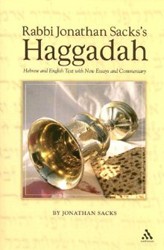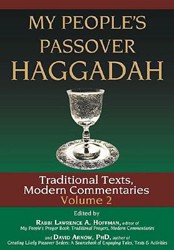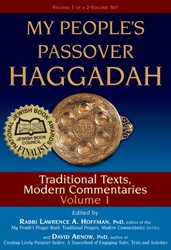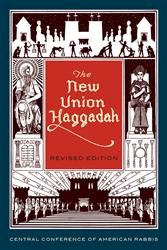The haggadah is the most published Jewish book, with more than 3,000 versions, which speaks not only to the centrality of the seder in Jewish life but also to its vitality and capacity to embrace the ever expanding interests and backgrounds of the guests gathered around the seder table.
So how are these haggadot different from all other haggadot?
The three haggadot discussed here address three clearly distinct groups of seder participants, and each is designed to add significance to their particular experience and enrich the meaning of Passover for them. It is unlikely that any one of them would serve the guests choosing one of the others.
Donald B. Susswein, a lawyer and student of Jewish studies, addresses his haggadah to newcomers who are perhaps unfamiliar with the story of Passover or guests who are troubled by the narrative — Did the Exodus really happen? Did God actually talk to Moses? — or just want to discuss anti-Semitism beginning with Pharaoh. The Haggadah for the Fifth Child tells the story of Passover through Exodus 1 – 20 rather than the traditional Maggid, along the way asking questions, inviting answers, suggesting contemporary parallels. Through its questions and observations, the values of Passover are made strikingly contemporary, but the text is somewhat stiffly scripted, a contrast to the open discussion it hopes to start. The final section of the book is a series of brief, wide-ranging essays that explore the topics raised in the haggadah. The haggadah includes all the traditional rituals, in English, Hebrew, and transliteration. Period photographs enliven the text. Bibliography, notes.
For decades Cokie Roberts, journalist and NPR correspondent, and Steve Roberts, journalist and professor at George Washington University, have gathered a group of largely intermarried families at their seder. Their hagaddah, based on the 1942 Reconstructionist haggadah but much revised and updated, is comfortably traditional but retains the universal outlook of the original; participants may join in We Shall Overcome and Michael, Row the Boat Ashore as well as chant Hallel. One particularly attractive feature that emphasizes the universality of Passover is the opportunity, after the second cup, for guests to read quotations from non-Jews that underline the message of Passover. Our Haggadah also tells the Passover story through Exodus rather than the traditional Deuteronomy Maggid, but this haggadah also has all the traditional rituals in English, Hebrew, and transliteration. Personal introductions by both husband and wife open the haggadah and set the tone. Comments, recipes, and helpful hints make this haggadah a useful guide for both interfaith families and anyone hosting a large multigenerational seder. Illustrations, sources, websites.
A Passover Haggadah is based on the lectures of Rabbi David Silber at Drisha Institute, founder and dean of Drisha Institute for Jewish Education. Taking the Mishnah’s instruction that engagement with midrash is the major activity of the seder, A Passover Haggadah uses rabbinic method to expand and enrich the seder text, but the strength of the book are the eight opening essays. Rabbi Silber’s midrashic method is deeply knowledgeable but never freighted with excessive reference. The explanation for the traditional Maggid is original and convincing; the essay on the plagues shows how various numerical groupings can illustrate an equal variety of biblical points. This is a haggadah to study, slowly turning over the literary links that allow one part of the Tanakh to talk to another. Robert Alter’s translation is used for the Torah and the Psalms. Bibliography, suggestions for further reading.
None of these haggadot are gender neutral.
Interview
Founded in 1979, Drisha Institute for Jewish Education is a leading center for the study of classical Jewish texts and has profoundly affected the lives of thousands of students throughout the United States and abroad who have taken classes and learned with its exceptional faculty. Drisha provides students of all ages and backgrounds with the opportunity to encounter texts in a serious, intellectually rigorous and inclusive manner. Founder Rabbi David Silber’s vision is to create “a more reflective and committed community.” For more information about Drisha, visit www.Drisha.org. Below Rabbi Silber further explains his new work, A Passover Haggadah: Go Forth and Learn, and his methods of study.
What about this haggadah makes it special?
The focus of this haggadah is the Biblical texts that ground it and the Rabbinic midrash which interprets or reinterprets the texts. This haggadah consists of eight essays that analyze the Biblical texts that serve as the roots of the haggadah and contains, as well, an under-the-line commentary of the haggadah itself that focuses on the structure of the seder and the use of Rabbinic midrash.
What can we learn from studying texts and how they inform each other?
Biblical narratives in general play off each other. If we consider a string of texts, text #4 is playing off texts #1, #2, and #3 — which, in turn, recall each other. The task of the interpreter is both to try to understand the main line and also to hear the echoes, resonances, effects and allusions that are present to assess their significance and what they are telling and teaching us. That, in my view, is a large part of what classical midrash is doing and what the present day student/interpreter attempts as well. It is an exciting challenge. The eight essays of this haggadah, separate but related to each other, demonstrate a way to begin to look at the core texts of the seder. The purpose of these essays, beyond suggesting specific interpretations, is to open up paths of possibilities and to encourage the reader to delve more deeply.
What makes studying about the seder and the text of the haggadah so central and important?
The seder is the core ritual of the Jewish tradition. The composer/editor of the haggadah, in effect, makes the claim that to understand Judaism one must understand the seder! So the haggadah is a great place to begin to examine the Jewish tradition, and the Torah is the best place to begin. One of my core assumptions is that the Rabbinic midrash addresses issues, problems and difficulties that are present in the text and it behooves us to examine their interpretations very carefully. In addition, as I say in the introduction, the very idea of midrash presupposes a text with virtually limitless possibilities which invites us to ask our questions and search for our answers. As such, it is the perfect vehicle for an evening that claims that in each generation we should see ourselves as leaving Egypt.
The haggadah is, in fact, the interweaving of ritual and study. The haggadah makes certain claims on us. One such claim is, I think, that study should generate reflective practice and that our practice should play out our deepest values. It argues as well for informed behavior — first, we understand and then our practice will be more meaningful. In effect, then, the study and practice strengthen each other.
Another claim is that the ritual of the seder is a model of community. We affirm a common past and express our hopes for the future; we share a special meal; we study together welcoming all questions; we speak in the deepest way of including the oppressed. The Rabbinic tradition understands study to be essential to community and knows that there are many kinds of questions and questioners. So the seder is, in effect, an educational model.
What was your goal in creating this haggadah?
I think that the key message I would like to get across is that there is more to learn. Through this haggadah, I hope to encourage the reader to explore the texts more deeply. It is, in effect, an invitation to go back to the sources in an attempt to discover new meanings. If this haggadah inspires readers to seek further, to agree or disagree with my thinking, I will consider it a great success.
Additional books featured in this review
Maron L. Waxman, retired editorial director, special projects, at the American Museum of Natural History, was also an editorial director at HarperCollins and Book-of-the-Month Club.





